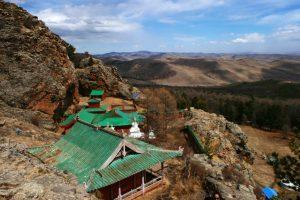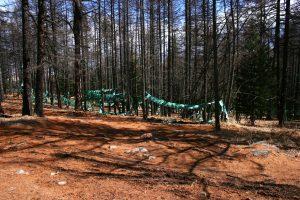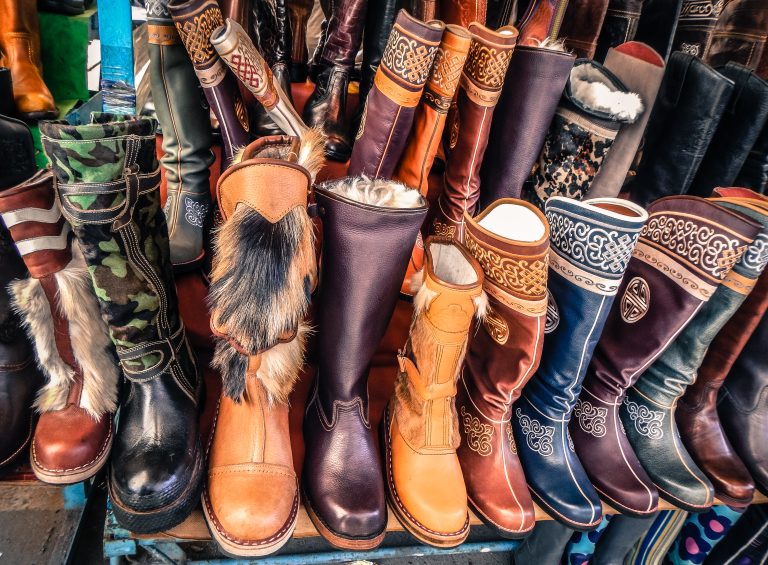Tövkhön Khiid Monastery

Tövkhön Khiid Monastery (also spelt Tovkhon and Tuvkhun) is on the border of Övörkhangai and Arkhangai provinces in the Central Heartland. It is one of a number of monasteries – all established in the 17th Century – within the area connected with the life and times of the religious leader Zanabazar (the first Jebtsundamba Khutuktu, the spiritual head of Tibetan Buddhism for Mongolia).
In the early 16th century, with the waning of the Mongol Empire, Mongolia once again became a land of warring factions. Buddhism found its foothold in Mongolia from the early 16th century onwards after Zanabazar (a descendent of Chinggis Khan, at the age of fourteen he was sent to Tibet to study Buddhism under the Dalai Lama) was recognised by the Dalai Lama and became head of Mongolian Buddhism. Mongolia had a succession of eight Living Buddhas, the third most important reincarnation of Tibetan Buddhism after the Dalai Lama and Panchen Lama. Monasteries in Mongolia became the centres of learning and theology providing education, gathering libraries, and dispensing Tibetan medicine. The monasteries also began to mass temporal wealth which made them into a formidable economic power.
As well as Shank and Tovkhon Khiid, Zanabazar established both Erdene Zuu Monastery – Mongolia’s oldest monastery – in Kharkhorin and also Erdene Khambiin Khiid at Khogno Khan.
When Zanabazar was around the age of twelve or thirteen, he established Shank Khiid. As was typical of the time, it was originally a tented camp and was where he lived and studied. (Having changed locations often, it settled in its current location (25/26 kilometres southeast from Kharkhorin) in 1787. It was partly destroyed during the political and religious purges of the 1930s.)
At around the time that Zanabazar was founding Shank Khiid (initially known as Baruun Khüree – western monastery), it is believed he discovered a rock looking similar to an armchair or throne at Shireet Ulaan Uul on the border of Övörkhangai and Arkhangai Provinces. The rock and location were deemed auspicious and the first building – a small meditation hut – of Tövkhön Khiid was constructed in 1651. Further buildings were constructed turning the site into a hermitage for personal use by Zanabazar.

The Fine Arts Museum | Ulaanbaatar
Zanabazar is considered one of the greatest Renaissance artists in Asia and it is at Tövkhön Khiid that he developed the soyembo script (now the national symbol of the country). He also created several sculptures which can now be found in the Fine Arts Museum in Ulaanbaatar which gives an overview of Mongolian art through the centuries as well as showcasing religious works of art by Zanabazar. This museum has some beautiful thangkas (religious scroll paintings used as tools of meditation to help Buddhists visualise themselves developing the qualities of the gods depicted).
Tövkhön Khiid As A Pilgrimage Site
Several pilgrimage sites are connected with Tövkhön Khiid and are very popular with visiting Mongolians, including Zanabazar’s footprint, and the ‘Mother’s Womb’ – a birthing tunnel. In fact, the entire Tövkhön Khiid has become a very popular pilgrimage site for Mongolians, especially in the summer months when large family groups visit. We – as visitors – may consider pilgrimage sites to be quiet and peaceful places but Mongolian families can be loud and boisterous and this may alter your experience of the site. However, Mongolian families are also typically a lot of fun and very hospitable so take the time to get to know them – it makes for a great cultural experience.
Tövkhön Khiid is also firmly established on most tour itineraries including those of the larger international tour groups which can at times overwhelm the site. But this is only really in peak season – around the time of Naadam – and if you visit outside of peak season or at quieter times of day then you will find enough space for the quiet reflection that the panoramic views deserve.
Getting There
The monastery is around 60km from Kharkhorin although there is a different route for those coming from the Orkhon Waterfall. For those coming from Kharkhorin, it is approximately 2.5/3.0 km from the car park to the monastery, uphill through some fairly dense pine forest. Not all 4×4 vehicles can make the steep ascent (especially after rain) so getting to the monastery can require patience and effort although horses are usually available. It takes around an hour to hike from the car park up to the monastery but be prepared for flies after rain or in the summer months. For those that walk, the monastery is located at around 2600 metres above sea level so be prepared for some breathlessness!

Yes, we can include a visit to Tövkhön Khiid although we suggest giving it the time it deserves rather than just including it as a two or three-hour side trip. For more on our experiences that include the Central Heartland where the monastery is located, please see here. Or just get in touch.
For now, Sain Yavaarau – Journey Well, Jess







